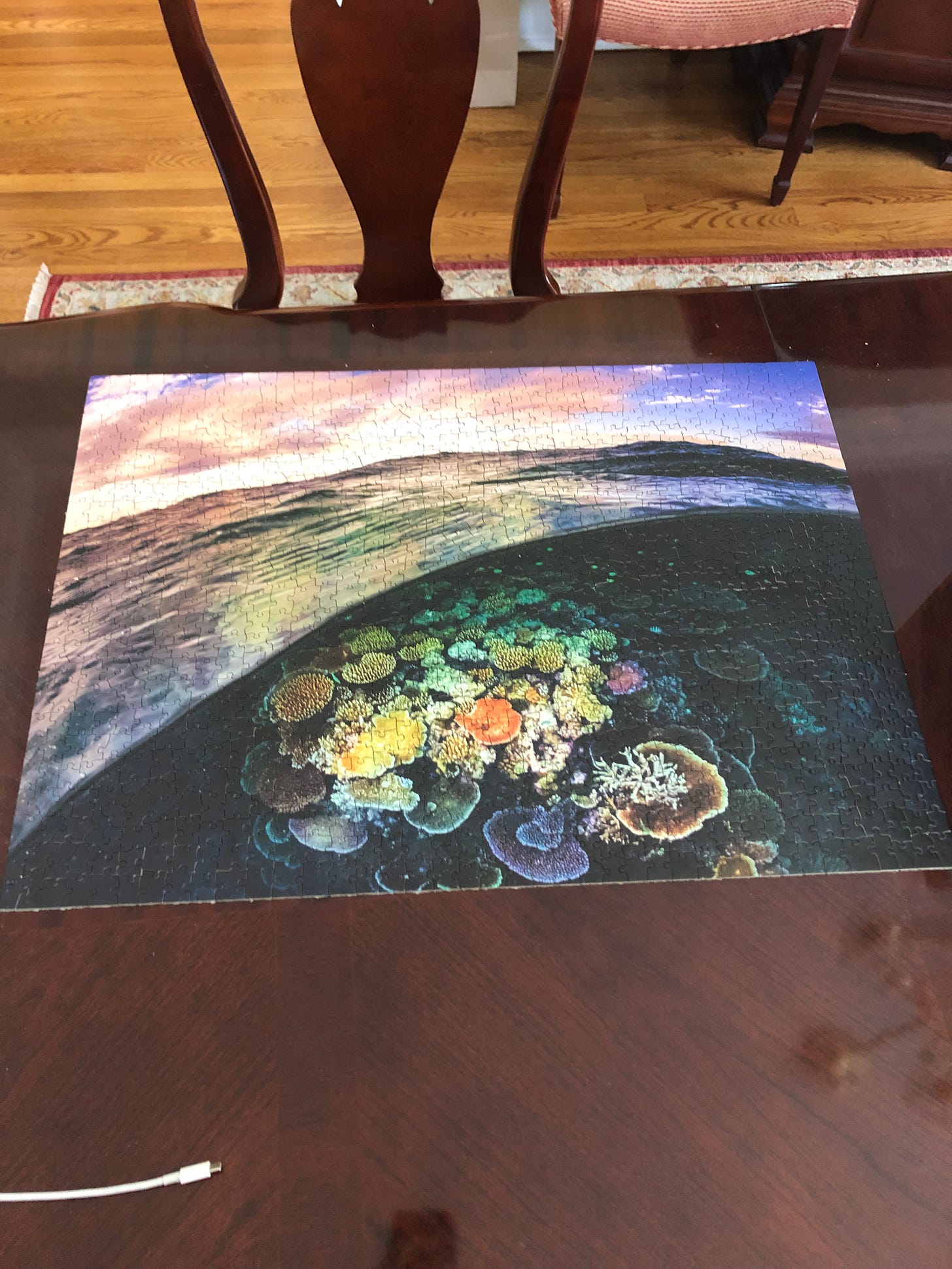I’m a fan of puzzles.
Like most of us, I rediscovered puzzles during the pandemic. I remember doing an 1000 piece National Geographic one of a brown bear. During my various winter breaks home, I’ve retrieved a set from a forgotten shelf in my living room at home. I’ve done a few now…pictures littered below…over the course of a few years.
Puzzles work for me because I’m both task and detail oriented. Each puzzle piece is a task and contain various details that I hope to stitch together. Everyone has a different approach when it comes to puzzles, and I’ve gotten a fair share of critique from my puzzle-making friends and family.
The Russo family’s puzzles are typically spread across our dining room table, in semi-apparent view of all who enter and exit the home. Whenever I work on a puzzle, I can expect the critical glance of my father, who sports his own very fancy puzzle table in the basement. He will come searching, usually after work, and stand with his arms crossed over my half-complete masterpiece.
“Kier, always start with the corners. Don’t do one piece before the edge of the puzzle is complete.”
I typically roll my eyes and continue on my way. My puzzle will be finished my way, without dad’s interference.
My mom is a grouper. Before even looking at how two pieces might fit together, she groups all of the pieces by color and shade. By the time she’s done, there are several fairly large piles of blue and green and red littering the table.
There is another reason that I’m drawn to puzzles, however.
Puzzles are ripe with metaphor.
Bear with me:
A puzzle is a picture split into a hundred pieces, five hundred pieces, a thousand pieces. Each smaller piece is a smaller part of the bigger picture, creating its own miniature picture. When you get a match, meaning when you fit one puzzle piece to another, you create a slightly bigger yet still miniature picture. You reveal a small part of the bigger picture and work to make more matches and more small pictures. To get to the big picture, however, you must handle each miniature picture. You must analyze it in color, shape, and form to see where it fits. You have to embrace the small to make the large (an axiom for life, perhaps?). If you’re lucky to finish the puzzle, you notice that you finally have the big picture! However the big picture is interrupted by nearly imperceptible creases where you matched one piece to its surrounding. No matter how hard you try, the big picture will never not be creased. Even though it appears as so in the guide the puzzle came with or the representation on the front of the puzzle box, it will never look exactly identical. You can’t see the whole without seeing the parts (another axiom for life, perhaps?).
To do a puzzle you must:
Embrace the small to make the large.
Embrace the parts to make the whole.
Humans are similar to puzzles. Walt Whitman says:
I am large. I contain multitudes.
I recently delved into this topic with two of my closest friends, Aya Geary & Karina Duffy. We launched our own podcast, entitled Arriving. Episode one is linked here; aptly titled Puzzlemakers. It’s a great listen that builds on the generative metaphor above. Enjoy.
Your puzzle friend,
Kiera






